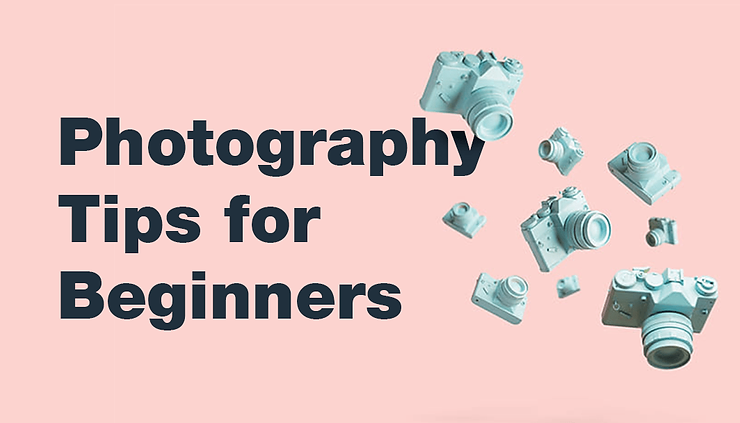12 Photography Tips for Beginners to Become Professional Photographer
The art of photography can be both fun and challenging. Whether you’re just starting as a beginner or looking to improve your skills, there are many techniques you can use to take better photos and make them look more professional. Below, we have shared the photography tips for beginners to help you capture amazing images like professionals. Let’s explore. We do have cameras on our phones, but most of the time our images are not that professional. Sometimes it may be blurry or sometimes it is not as good as we thought. We have also seen if we click different pictures from different angles, we may obtain different results as well.
Before telling you guys all the tips, firstly we should know What is photography? Photography is a captivating journey that allows you to freeze moments in time and express your creativity. If you’re a beginner, diving into the world of photography can be both exciting and overwhelming.
Photography Tips for Beginners
In this blog, we’ve got some valuable photography tips for beginners to help you click awesome pictures, exploring strategies and methodologies for capturing visually striking photographs of exceptional caliber, especially for individuals who are at the initial stages of their photography journey. Whether you are an aspiring photographer, or simply an individual with a curiosity for the many processes involved in capturing an image through a camera.
Here are the 12 photography tips for beginners which are as follows: –
Learn the Basics of Composition
Basics Composition is the arrangement of elements within a photograph. It includes things like the placement of the subject, and the use of lines, shapes, patterns, and negative space. Learning the basics of composition is essential to creating visually appealing photographs. Some key principles are the rule of thirds, leading lines, and framing. These techniques help to create balance and interest in your images.
Experiment with Different Camera Settings
Do you want free career counseling?
Ignite Your Ambitions- Seize the Opportunity for a Free Career Counseling Session.
- 30+ Years in Education
- 250+ Faculties
- 30K+ Alumni Network
- 10th in World Ranking
- 1000+ Celebrity
- 120+ Countries Students Enrolled
As a beginner, it’s easy to stick to the automatic settings on your camera. However, learning how to use manual settings can help you take better photos in a variety of lighting situations. Experiment with aperture, shutter speed, and ISO to control the amount of light that enters your camera and create the desired effect in your photos. For example, a low aperture (f/2.8 or lower) creates a shallow depth of field, making your subject stand out from the background.
Read Also: Lighting Techniques for Product Photography
Pay Attention to the Lighting
The right lighting can make all the difference in creating a professional-looking photo. Whenever possible, use natural light when shooting indoors. Position your subject near a window or use a reflector to bounce light onto their face. When shooting outdoors, avoid the harsh midday sun and aim for the “golden hour,” the hour after sunrise or before sunset when the light is soft and warm.
Book Now →
Use Editing Software to Enhance Your Photos
Even the best photographers use editing software to enhance their images. There are many free and paid options, like Adobe Light room and Photoshop. Editing software helps you to adjust exposure, contrast, and colour, as well as crop and straighten your images. You should, however, avoid overediting. Keep your edits subtle and natural-looking to maintain the integrity of your photos.
Learn How to Take Professional Photos
The basic objective for beginner photographers is to produce photographs that look like they were taken by professionals. In order to accomplish this, it is necessary to have a fundamental understanding of the fundamental settings of the camera, such as aperture, shutter speed, and ISO. These components are extremely important in achieving the impact that was intended as well as regulating the exposure. Try out a variety of various settings to observe how the changes affect the photographs you take.
Mastering Photography Composition
Photography Composition is the technique of arranging objects within your frame to create photos that are both aesthetically pleasing and meaningful to the viewer. Get yourself acquainted with compositional principles such as the rule of thirds, leading lines, and framing. You’ll find that adhering to these guidelines helps you craft compositions that are well-balanced and interesting to the eye.
Do you want free career counseling?
Ignite Your Ambitions- Seize the Opportunity for a Free Career Counseling Session.Dive into Photo Editing
The process of improving and perfecting your photographs by means of applications such as Adobe Lightroom or Photoshop is referred to as photo editing. It gives you the ability to modify the colors, make exposure corrections, and add creative effects. You may take your photos from being good to being spectacular by learning the fundamentals of photo editing.
Read Also: Top 5 Editing Tools to Enhance Your Photography Skills
Post Your Pictures to The Internet
In this day and age, sharing photos online is the best gain attention from others. It is absolutely necessary to publish your work online in order to gain exposure and receive feedback. Make a digital portfolio using social media websites such as Instagram, Flickr, or 500px. Participate actively in the community of photographers, look for motivation, and display your development.
Becoming a Professional Photographer
If you feel that your interest in photography is only going to increase with time, you should consider pursuing a career in the field. Taking this route requires you to construct an impressive portfolio, cultivate relationships with other photographers, and actively sell your services. To hone your photography abilities even further, you might choose to participate in some workshops or classes.
Consider the Rule of Thirds
The rule of thirds is a technique that divides the frame of your photo into thirds, both horizontally and vertically. The idea is to place your subject at one of the intersections of these lines, rather than in the centre of the frame. In this way, the photo becomes dynamic and more visually appealing. You must also consider the balance of your photo when using the rule of thirds. The empty spaces in your photo should be balanced with the subject.
Read Also: Understanding the Rule of Thirds: Composition Techniques for Stunning Visuals
Pay Attention to Your Background
Photographers often forget the background when focusing solely on their subject. Nevertheless, paying attention to your background can make a big difference. Make sure your background compliments your subject instead of detracting from it. Avoid cluttered or distracting backgrounds, and consider using a shallow depth of field to blur the background and make your subject stand out. Find the most flattering background for your shot by experimenting with angles and distances.
Read Also: Mastering the Lens: A Guide to Photography Techniques
Practice, Practice, Practice
To master photography, you must practice. Whenever you can, take your camera with you and try different settings and subjects. Join a photography group or club to learn from others and get feedback on your photos. The more you practice, the better you will become, and the more professional-looking your photos look.
Conclusion
By learning the basics of composition, experimenting with different camera settings, paying attention to lighting, using editing software, and practising regularly, you can take your photography skills to the next level. As a beginner, it can be overwhelming to try to learn everything at once, so start with one or two tips and gradually incorporate the others into your practice. With time and dedication, you can create stunning photographs that look like they were taken by a professional.
Photography is an exciting journey that gives people a lot of ways to express their creativity and grow as individuals. If you are just starting out , the tips above will give you a good place to start. AAFT School of photography also provides various courses which can guide you to become a good photographer. Remember that practice makes perfect, so keep taking pictures, learning more, and getting better. Your images will definitely show your unique point of view and your unwavering dedication.
Read Also: Capturing Moments, Telling Stories: The Art Of Photography
FAQ
What are the most important photography tips for beginners?
Beginners should start by mastering their camera’s settings, including aperture, shutter speed, and ISO. Learning composition techniques like the rule of thirds and leading lines is crucial. Consistent practice and experimentation are key to improving your photography skills.
What is the best camera for beginners?
Entry-level DSLR or mirrorless cameras from reputable brands like Canon, Nikon, or Sony are excellent choices for beginners. Alternatively, high-end smartphones with advanced camera capabilities can also be suitable for learning the basics of photography.
What are the best photo editing software programs?
Adobe Lightroom and Photoshop are industry-standard options for photo editing, offering a wide range of tools and features. Free alternatives like GIMP and Pixlr are suitable for basic editing needs, while mobile apps like Snapseed are convenient for on-the-go editing.
How can I use natural light to take better photos?
To utilize natural light effectively, shoot during the golden hour, shortly after sunrise or before sunset, for soft and warm lighting. Experiment with angles and positioning to make the most of natural light sources, such as windows or open doors.

AAFT has been providing the world with limitless creativity and expression since 1993! Through a dynamic and industry-driven curriculum, AAFT provides engaging and captivating articles to persuasive blogs and empowers its readers to explore diverse avenues of creative media education-related content.






